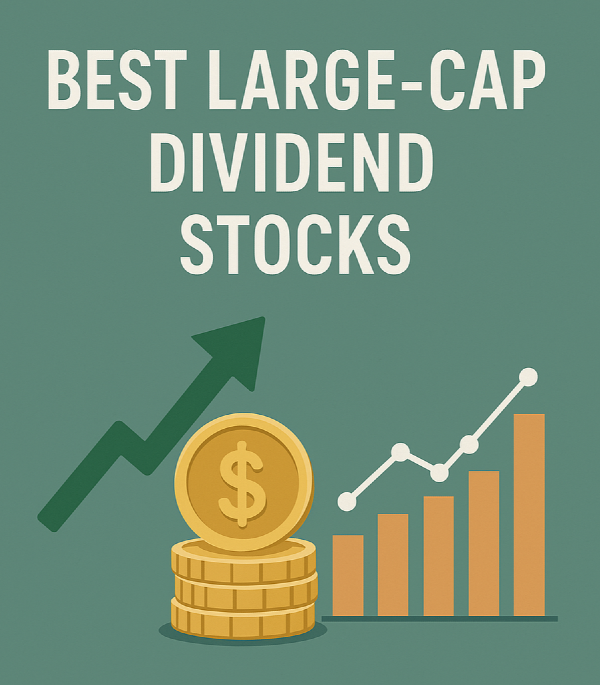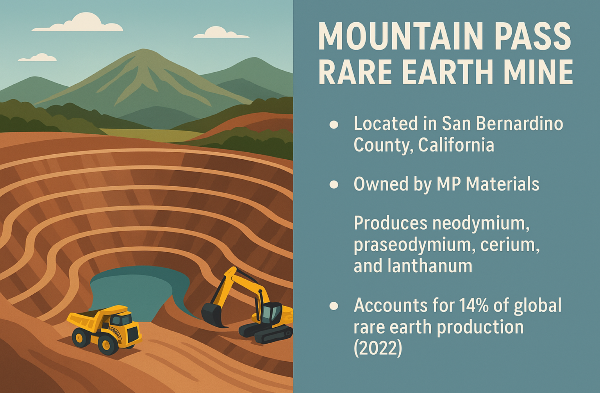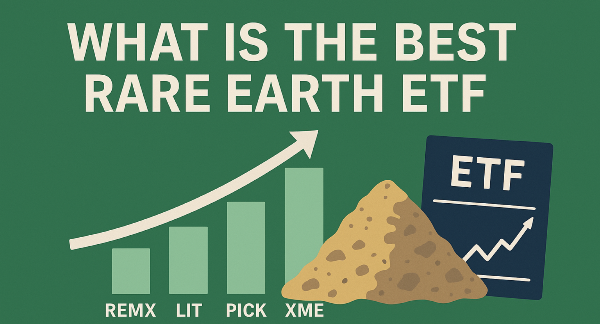Introduction
Large-cap dividend stocks are a cornerstone of many investment portfolios, offering a combination of stability and consistent income. These companies, typically valued at over $10 billion, are well-established industry leaders with strong financial foundations. Investors favor large-cap stocks for their lower volatility and reliable dividend payouts, making them an attractive option for long-term wealth accumulation. Dividend-paying large-cap companies provide steady cash flow, helping investors generate passive income while benefiting from potential capital appreciation.
What Are Large-Cap Dividend Stocks?
Large-cap dividend stocks refer to the shares of companies that are typically industry leaders with strong financial stability and a long history of profitability. Large-cap stocks are widely recognized for their ability to generate consistent returns, making them a preferred choice for conservative investors. Many of these companies distribute a portion of their earnings to shareholders in the form of dividends. Companies that consistently pay dividends share several key characteristics.
Large-cap stocks differ from mid-cap and small-cap stocks in terms of size, risk, and growth potential. Mid-cap stocks, with market capitalizations between $2 billion and $10 billion, offer a balance between stability and expansion opportunities. Small-cap stocks, valued below $2 billion, tend to be more volatile but can deliver higher growth rates. While mid-cap and small-cap stocks may provide greater upside potential, they also carry increased risk due to market fluctuations and business uncertainties.
Advantages of Investing in Large-Cap Dividend Stocks
Large-cap dividend stocks provide stability and lower volatility compared to smaller companies, making them a preferred choice for conservative investors. These companies are well-established which reduces the risk of sudden market fluctuations. Unlike small-cap stocks, which can experience sharp price swings due to limited liquidity and market speculation, large-cap stocks tend to move more predictably.
Many of these companies have a long history of paying dividends, offering investors a steady stream of passive income. Dividend payments can be reinvested to compound returns, enhancing portfolio growth over time. Additionally, large-cap stocks often maintain stable payout ratios, ensuring that dividends remain sustainable even during periods of economic uncertainty. Their leadership positions within industries such as technology, healthcare, and consumer goods enable them to drive innovation and sustain competitive advantages. As a result, large-cap dividend stocks offer investors both income stability and long-term growth potential, making them a cornerstone of well-balanced investment portfolios.
Key Metrics for Evaluating Dividend Stocks
Dividend yield is a crucial metric for evaluating dividend stocks, as it measures the annual dividend payment relative to the stock price. A higher yield indicates a greater return on investment through dividends, but investors should also consider the sustainability of these payouts. Investors typically seek a balance between yield and long-term growth potential, ensuring that dividend payments remain consistent without compromising the company’s financial health. The payout ratio is another key factor in assessing dividend sustainability.
This metric represents the percentage of earnings allocated to dividend payments, helping investors determine whether a company can maintain or increase its dividends over time.
Dividend growth rate reflects a company’s ability to increase its dividend payments over time. Investors often favor companies with annual dividend growth rates between 5% and 10%, as these firms provide both income stability and capital appreciation. Historical trends in dividend growth can indicate a company’s resilience during economic downturns, making them attractive for long-term investment strategies.
Best Large-Cap Dividend Stocks to Consider
Large-cap dividend stocks provide investors with a combination of stability and income, making them a popular choice for long-term portfolios. Some of the top-performing dividend stocks include ExxonMobil (XOM), Johnson & Johnson (JNJ), Merck (MRK), and PepsiCo (PEP), all of which have demonstrated strong financial health and consistent dividend payouts. These companies maintain competitive advantages within their industries, ensuring reliable earnings and sustainable dividend growth. Industry leaders in sectors such as technology, healthcare, and consumer goods offer diverse opportunities for dividend investors.
Sector diversification helps investors balance risk while capitalizing on industry-specific growth trends. Comparing dividend yields and long-term growth potential is essential when selecting large-cap dividend stocks. Investors should assess payout ratios, historical dividend increases, and overall financial stability to determine the best fit for their portfolios. Companies with strong dividend histories and sustainable growth strategies provide the best opportunities for long-term wealth accumulation.
Dividend Aristocrats: Companies with Long-Term Growth
Dividend Aristocrats are companies within the S&P 500 that have consistently increased their dividend payouts for at least 25 consecutive years. These firms are known for their financial stability, strong cash flows, and commitment to rewarding shareholders. To qualify as a Dividend Aristocrat, a company must meet strict criteria, including maintaining a steady dividend growth rate and demonstrating resilience across economic cycles. Investors often view these stocks as reliable income-generating assets.
Investing in Dividend Aristocrats provides several advantages, particularly for those seeking consistent income and portfolio stability. These companies have a proven track record of weathering market downturns while continuing to increase dividends, outperforming the broader market on a risk-adjusted basis and offering a combination of capital appreciation and passive income.
Sector Analysis: Which Industries Offer the Best Dividend Stocks?
Dividend-paying stocks are found across various industries, with financial, energy, and consumer sectors offering some of the most stable income-generating opportunities. Investors seeking reliable income often allocate funds across these sectors to balance risk and return. Sector trends play a crucial role in dividend growth and payouts, influencing how companies distribute earnings to shareholders. Economic factors and interest rate changes affect financial stocks. Energy sector dividends fluctuate with commodity prices, making them attractive during periods of high demand. Understanding these trends helps investors select dividend stocks that are suitable.
Emerging opportunities in dividend-paying technology and healthcare stocks are gaining traction among investors. Traditionally, tech companies focused on reinvesting profits into growth, but mature firms like Microsoft and Apple now offer dividends alongside capital appreciation. Healthcare stocks, particularly pharmaceutical and medical device companies, provide stable dividends due to consistent demand for healthcare services. As these industries evolve, investors can find new dividend opportunities that combine income generation with long-term growth potential.
Risks Associated with Large-Cap Dividend Stocks
Economic downturns pose a significant risk to large-cap dividend stocks, as companies may struggle to maintain profitability during periods of financial instability. Historical data shows that even well-established companies have reduced dividends during recessions to preserve cash flow. Interest rate fluctuations can affect the valuation of dividend stocks, particularly those in sectors sensitive to borrowing costs. Additionally, higher borrowing costs can strain corporate finances, leading to lower dividend payouts. Market competition and industry disruptions can also impact dividend sustainability. Investors should monitor trends to make portfolio adjustments.
Strategies for Building a Dividend Portfolio
Diversification across industries is essential for reducing risk in a dividend portfolio. By investing in companies from various sectors, investors can mitigate the impact of economic downturns that may affect specific industries. Allocating funds across sectors such as healthcare, technology, energy, and consumer goods ensures that dividend income remains consistent even when certain industries face challenges. Balancing high-yield stocks with dividend growth companies is another key strategy for building a resilient dividend portfolio.
Companies with consistent dividend growth, such as Dividend Aristocrats, provide stability while ensuring that payouts continue to rise, enhancing overall portfolio performance. Reinvesting dividends is crucial for compounding returns and maximizing portfolio growth. Many brokerage firms offer Dividend Reinvestment Plans (DRIPs), enabling investors to automatically reinvest earnings without incurring transaction fees.
Conclusion
Large-cap dividend stocks provide a dependable combination of stability, income, and long-term growth, making them a valuable component of diversified portfolios. By investing in financially strong industry leaders, investors can benefit from consistent dividend payouts while minimizing volatility. Understanding key metrics such as dividend yield, payout ratios, and sector trends helps in selecting the best-performing stocks that align with financial goals.
Whether focusing on Dividend Aristocrats, balancing high-yield stocks with growth companies, or reinvesting dividends for compounding returns, investors can optimize their strategies to maximize income while preserving capital appreciation over time.




























Introduction
Large-cap dividend stocks are a cornerstone of many investment portfolios, offering a combination of stability and consistent income. These companies, typically valued at over $10 billion, are well-established industry leaders with strong financial foundations. Investors favor large-cap stocks for their lower volatility and reliable dividend payouts, making them an attractive option for long-term wealth accumulation. Dividend-paying large-cap companies provide steady cash flow, helping investors generate passive income while benefiting from potential capital appreciation.
What Are Large-Cap Dividend Stocks?
Large-cap dividend stocks refer to the shares of companies that are typically industry leaders with strong financial stability and a long history of profitability. Large-cap stocks are widely recognized for their ability to generate consistent returns, making them a preferred choice for conservative investors. Many of these companies distribute a portion of their earnings to shareholders in the form of dividends. Companies that consistently pay dividends share several key characteristics.
Large-cap stocks differ from mid-cap and small-cap stocks in terms of size, risk, and growth potential. Mid-cap stocks, with market capitalizations between $2 billion and $10 billion, offer a balance between stability and expansion opportunities. Small-cap stocks, valued below $2 billion, tend to be more volatile but can deliver higher growth rates. While mid-cap and small-cap stocks may provide greater upside potential, they also carry increased risk due to market fluctuations and business uncertainties.
Advantages of Investing in Large-Cap Dividend Stocks
Large-cap dividend stocks provide stability and lower volatility compared to smaller companies, making them a preferred choice for conservative investors. These companies are well-established which reduces the risk of sudden market fluctuations. Unlike small-cap stocks, which can experience sharp price swings due to limited liquidity and market speculation, large-cap stocks tend to move more predictably.
Many of these companies have a long history of paying dividends, offering investors a steady stream of passive income. Dividend payments can be reinvested to compound returns, enhancing portfolio growth over time. Additionally, large-cap stocks often maintain stable payout ratios, ensuring that dividends remain sustainable even during periods of economic uncertainty. Their leadership positions within industries such as technology, healthcare, and consumer goods enable them to drive innovation and sustain competitive advantages. As a result, large-cap dividend stocks offer investors both income stability and long-term growth potential, making them a cornerstone of well-balanced investment portfolios.
Key Metrics for Evaluating Dividend Stocks
Dividend yield is a crucial metric for evaluating dividend stocks, as it measures the annual dividend payment relative to the stock price. A higher yield indicates a greater return on investment through dividends, but investors should also consider the sustainability of these payouts. Investors typically seek a balance between yield and long-term growth potential, ensuring that dividend payments remain consistent without compromising the company’s financial health. The payout ratio is another key factor in assessing dividend sustainability. This metric represents the percentage of earnings allocated to dividend payments, helping investors determine whether a company can maintain or increase its dividends over time.
Dividend growth rate reflects a company’s ability to increase its dividend payments over time. Investors often favor companies with annual dividend growth rates between 5% and 10%, as these firms provide both income stability and capital appreciation. Historical trends in dividend growth can indicate a company’s resilience during economic downturns, making them attractive for long-term investment strategies.
Best Large-Cap Dividend Stocks to Consider
Large-cap dividend stocks provide investors with a combination of stability and income, making them a popular choice for long-term portfolios. Some of the top-performing dividend stocks include ExxonMobil (XOM), Johnson & Johnson (JNJ), Merck (MRK), and PepsiCo (PEP), all of which have demonstrated strong financial health and consistent dividend payouts. These companies maintain competitive advantages within their industries, ensuring reliable earnings and sustainable dividend growth. Industry leaders in sectors such as technology, healthcare, and consumer goods offer diverse opportunities for dividend investors.
Sector diversification helps investors balance risk while capitalizing on industry-specific growth trends. Comparing dividend yields and long-term growth potential is essential when selecting large-cap dividend stocks. Investors should assess payout ratios, historical dividend increases, and overall financial stability to determine the best fit for their portfolios. Companies with strong dividend histories and sustainable growth strategies provide the best opportunities for long-term wealth accumulation.
Dividend Aristocrats: Companies with Long-Term Growth
Dividend Aristocrats are companies within the S&P 500 that have consistently increased their dividend payouts for at least 25 consecutive years. These firms are known for their financial stability, strong cash flows, and commitment to rewarding shareholders. To qualify as a Dividend Aristocrat, a company must meet strict criteria, including maintaining a steady dividend growth rate and demonstrating resilience across economic cycles. Investors often view these stocks as reliable income-generating assets.
Investing in Dividend Aristocrats provides several advantages, particularly for those seeking consistent income and portfolio stability. These companies have a proven track record of weathering market downturns while continuing to increase dividends, outperforming the broader market on a risk-adjusted basis and offering a combination of capital appreciation and passive income.
Sector Analysis: Which Industries Offer the Best Dividend Stocks?
Dividend-paying stocks are found across various industries, with financial, energy, and consumer sectors offering some of the most stable income-generating opportunities. Investors seeking reliable income often allocate funds across these sectors to balance risk and return. Sector trends play a crucial role in dividend growth and payouts, influencing how companies distribute earnings to shareholders. Economic factors and interest rate changes affect financial stocks. Energy sector dividends fluctuate with commodity prices, making them attractive during periods of high demand. Understanding these trends helps investors select dividend stocks that are suitable.
Emerging opportunities in dividend-paying technology and healthcare stocks are gaining traction among investors. Traditionally, tech companies focused on reinvesting profits into growth, but mature firms like Microsoft and Apple now offer dividends alongside capital appreciation. Healthcare stocks, particularly pharmaceutical and medical device companies, provide stable dividends due to consistent demand for healthcare services. As these industries evolve, investors can find new dividend opportunities that combine income generation with long-term growth potential.
Risks Associated with Large-Cap Dividend Stocks
Economic downturns pose a significant risk to large-cap dividend stocks, as companies may struggle to maintain profitability during periods of financial instability. Historical data shows that even well-established companies have reduced dividends during recessions to preserve cash flow. Interest rate fluctuations can affect the valuation of dividend stocks, particularly those in sectors sensitive to borrowing costs. Additionally, higher borrowing costs can strain corporate finances, leading to lower dividend payouts. Market competition and industry disruptions can also impact dividend sustainability. Investors should monitor trends to make portfolio adjustments.
Strategies for Building a Dividend Portfolio
Diversification across industries is essential for reducing risk in a dividend portfolio. By investing in companies from various sectors, investors can mitigate the impact of economic downturns that may affect specific industries. Allocating funds across sectors such as healthcare, technology, energy, and consumer goods ensures that dividend income remains consistent even when certain industries face challenges. Balancing high-yield stocks with dividend growth companies is another key strategy for building a resilient dividend portfolio.
Companies with consistent dividend growth, such as Dividend Aristocrats, provide stability while ensuring that payouts continue to rise, enhancing overall portfolio performance. Reinvesting dividends is crucial for compounding returns and maximizing portfolio growth. Many brokerage firms offer Dividend Reinvestment Plans (DRIPs), enabling investors to automatically reinvest earnings without incurring transaction fees.
Conclusion
Large-cap dividend stocks provide a dependable combination of stability, income, and long-term growth, making them a valuable component of diversified portfolios. By investing in financially strong industry leaders, investors can benefit from consistent dividend payouts while minimizing volatility. Understanding key metrics such as dividend yield, payout ratios, and sector trends helps in selecting the best-performing stocks that align with financial goals.
Whether focusing on Dividend Aristocrats, balancing high-yield stocks with growth companies, or reinvesting dividends for compounding returns, investors can optimize their strategies to maximize income while preserving capital appreciation over time.